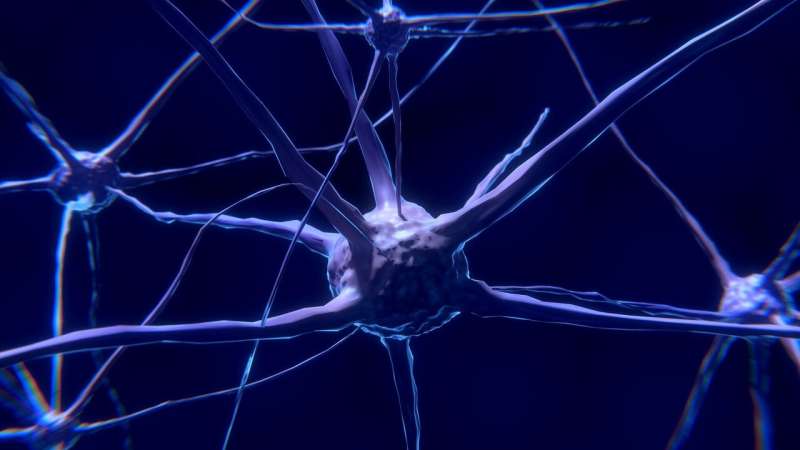
Scientists have developed a research method that allows for a much more detailed examination of the brain processes involved in some neurological and mental disorders. This is achieved by growing human cortical organoids in culture and inserting them into developing rodent brains to see how they integrate and function over time. The study appears in the journal Nature.
“This work provides a significant advance in the ability of scientists to study the cellular and circuit underpinnings of complex human brain disorders. It allows organoids to get ‘wired’ in a more biologically relevant context and function in ways they can’t do in a petri dish,” said David Panchision, Ph.D., chief of the Developmental and Genomic Neuroscience Research Branch in the Division of Neuroscience and Basic Behavioral Science at NIMH.
Researcher Sergiu Pasca, M.D., and colleagues at Stanford University, Stanford, California, demonstrated that a cortical organoid cultured from human stem cells can be transplanted onto—and integrated into—the developing rat brain to study certain developmental and functional processes. The findings suggest that transplanted organoids may offer a powerful tool for investigating the processes associated with disease development.
Researchers sometimes use cortical organoids—three-dimensional cultures of human stem cells that can mirror some of the developmental processes seen in typical brains—as a model for investigating how some aspects of the human brain develops and functions. However, cortical organoids lack the connectivity seen in typical human brains, limiting their usefulness for understanding complex brain processes. Researchers have been trying to overcome some of these limitations by transplanting individual human neurons into adult rodent brains. While these transplanted neurons connect with rodent brain cells, they do not become fully integrated due to the developmental limitations of the adult rat brain.
In this study, the team of researchers advanced the use of brain organoids for research by transplanting an intact human cortical organoid into a developing rat brain. This technique creates a unit of human tissue that can be examined and manipulated. The researchers used methods previously pioneered in the Pasca lab to create cortical organoids using human-induced pluripotent stem cells—cells derived from adult skin cells that have been reprogrammed into an immature stem-cell-like state. They then implanted these organoids onto the rat primary somatosensory cortex, a part of the brain involved in processing sensation.
The researchers did not detect any motor or memory abnormalities or abnormalities in brain activity in the rats that received the transplanted organoid. Blood vessels from the rat brain successfully supported the implanted tissue, which grew over time.
To understand the extent to which the organoids could integrate into the rat somatosensory cortex, the researchers infected a cortical organoid with a viral tracer that spreads through brain cells as an indicator of functional connections. After transplanting the marked organoid onto the rat’s primary somatosensory cortex, researchers detected the viral tracer in multiple brain areas, such as the ventrobasal nucleus and the somatosensory cortex. In addition, the researchers observed new connections between the thalamus and the transplanted area. These connections were activated using electrical stimulation and stimulation of the rat’s whiskers, indicating that they were receiving meaningful sensory input. Moreover, the researchers were able to activate human neurons in the transplanted organoid to modulate the rat’s reward-seeking behavior. The findings suggest functional integration of the transplanted organoid into specific brain pathways.
Structurally and functionally, after seven to eight months of growth, the transplanted brain organoid resembled neurons from human brain tissue more than human organoids maintained in cell culture. The fact that the transplanted organoids mirrored the structural and functional features of human cortical neurons led the researchers to wonder if they could use transplanted organoids to examine aspects of human disease processes.
“The promise of this platform is not only in identifying what molecular processes underlie the advanced maturation of human neurons in living circuits and leveraging it to improve conventional in vitro models, but also in providing behavioral readouts for human neurons,” said Dr. Pasca.
To examine this, the researchers generated cortical organoids with cells from three participants with a rare genetic disorder associated with autism and epilepsy called Timothy syndrome and three participants without any known diseases and implanted them onto the rat brain. Both types of organoids integrated into the rat somatosensory cortex, but organoids derived from Timothy Syndrome patients displayed structural differences. These structural differences did not appear in organoids that were created from the cells of patients with Timothy Syndrome and maintained in cell culture.
Source: Read Full Article


